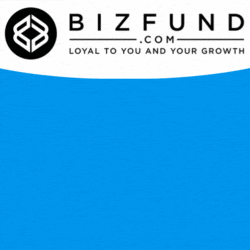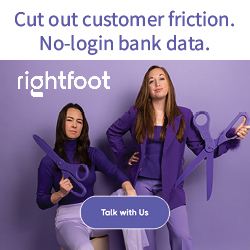Canada
Big Lines of Credit for Canadian Merchants?
November 15, 2023 Business loan brokers in Canada typically do not fit the same mold as brokers in the United States. Most business loan brokers in Canada are actually mortgage brokers working with mortgage clients that happen to own a business. Such has been the case for Kingsmen Capital Investments, a Canadian small business lender that gets roughly half of its deal flow from mortgage brokers. It’s a nice relationship, but Kingsmen Capital believed that something was missing between a bank loan and merchant cash advances/small unsecured loans.
Business loan brokers in Canada typically do not fit the same mold as brokers in the United States. Most business loan brokers in Canada are actually mortgage brokers working with mortgage clients that happen to own a business. Such has been the case for Kingsmen Capital Investments, a Canadian small business lender that gets roughly half of its deal flow from mortgage brokers. It’s a nice relationship, but Kingsmen Capital believed that something was missing between a bank loan and merchant cash advances/small unsecured loans.
“We’ve started to come out of the MCA space,” said Kingsmen Managing Partner Roger Dusanj.
The company’s idea was lines of credit that start as low as $250,000 and go up to $2 million (or even higher). Although it can be a little more expensive than a bank, the true LOC can also be easier to obtain. Dusanj, for example, said that they’ll evaluate a business’s ebitda versus looking at their total net income. Covid, he added, has also made businesses across Canada more receptive to non-bank products and so it’s taking off.
“In 18 months, we paid out $100 million,” Dusanj said of the loans they’ve made already. The progress so far has made them confident that they’re on to something big. The company will also do term loans and equipment financing.
Although the Canadian mortage broker community works well, Kingsmen says that they would work with US-residing business loan brokers. The company was founded in 2015.
Back to Business Lending in Canada
November 2, 2023 “There’s a need for products and services like ours across all cycles,” said Cato Pastoll, CEO of Loop, on the small business lending panel held at the Lenders Summit this week in Toronto.
“There’s a need for products and services like ours across all cycles,” said Cato Pastoll, CEO of Loop, on the small business lending panel held at the Lenders Summit this week in Toronto.
It’s unclear what cycle the industry is in exactly. The Lenders Summit, put on every year by the Canadian Lenders Association, was not only sold out but packed wall to wall with more than 500 attendees. The tone was relatively upbeat despite Canada’s key interest rate holding steady at 5% and economic headwinds blowing in the background.
OnDeck Canada COO Harley Greenspoon said that his company just had their best October in four years and that they’ve returned back to pre-pandemic growth. “Demand is actually not the issue at all,” Greenspoon said.
Not only is the demand for business loans there but OnDeck Canada has not had to pass on the rising costs of capital thanks to greater efficiencies unlocked by reducing headcount and increasing automation.
 Lauren Thompson, VP of Specialty Finance for Peoples Group, whose organization partners with fintechs and lenders, said that from a bird’s-eye view banks would probably continue to restrict capital being loaned to small businesses for the foreseeable future. “I don’t think that small businesses are best served through the traditional banking system,” said Thompson.
Lauren Thompson, VP of Specialty Finance for Peoples Group, whose organization partners with fintechs and lenders, said that from a bird’s-eye view banks would probably continue to restrict capital being loaned to small businesses for the foreseeable future. “I don’t think that small businesses are best served through the traditional banking system,” said Thompson.
Pastoll of Loop pointed out an irony with this, that banks tend to under serve the underserved when they actually need it most. “90% of the private sector workforce is employed by small businesses so if you want to stimulate the economy, we as fintechs can do it faster…” Pastoll said.
 Thompson explained that the traditional financial system can be hamstrung by reviewing data that is already stale such as financial reports that reflect a moment in time six months ago while a fintech lender has more of a live pulse on what’s going on.
Thompson explained that the traditional financial system can be hamstrung by reviewing data that is already stale such as financial reports that reflect a moment in time six months ago while a fintech lender has more of a live pulse on what’s going on.
Greenspoon of OnDeck Canada, for example, could rattle off the top of his head industries that are experiencing challenges, the most notable being transportation.
Finally, Pastoll was asked if Loop had contemplated ever having to deal with a high interest rate environment back when he founded the company almost nine years ago. Pastoll explained that his whole inspiration for founding Loop in the first place was to help small business owners precisely during difficult times. Both of his parents were small business owners and he had watched firsthand how hard it was to find financing.
“Again, I just think about what my parents had to go through,” he said.
Canada Reduces Max APR Cap From 47% to 35%
March 28, 2023 The government of Canada announced that it will be reducing the max allowable loan APR under the Criminal Code from 47% to 35%. The startling news was included in the annual federal budget report released on Tuesday as part of the nation’s initiative to “crack down on predatory lending.” It also said that it plans to consider reducing the max cap by even more in the future.
The government of Canada announced that it will be reducing the max allowable loan APR under the Criminal Code from 47% to 35%. The startling news was included in the annual federal budget report released on Tuesday as part of the nation’s initiative to “crack down on predatory lending.” It also said that it plans to consider reducing the max cap by even more in the future.
The budget report supported its decision by sharing an anecdote about a fictional single mother name Hannah. In this story, Hannah’s car breaks down and she is unable to get to work unless she comes up with $5,000 for the repairs. It’s then that a “predatory lender” tries to offer her a loan with a 46.9% interest rate, allowing her to fix her car but leaving her in a “cycle of debt.” Fortunately, due to the new APR cap that will be put in place, Hannah will be spared this fate, the government touts. Ironically, it does not consider the possible consequences of receiving no loan at all.
The proposal to reduce the max APR cap had been opposed by the Canadian Lenders Association. It issued an official statement shortly after the new rule was made public.
“This will disproportionately affect low-income Canadians – the segment of the population most at risk given their inability to qualify for credit at prime rates – who struggle to make ends meet by limiting or eliminating entirely their access to credit,” said CLA president and CEO, Gary Schwartz. “In an effort to ease the financial burden on Canadians who need it most, the federal government has achieved the opposite. If you are borrowing at non-prime, you are already facing financial challenges. For potentially millions of Canadians, that burden just got heavier today.”
Filling The Funding Gap for Canadian Borrowers
March 5, 2023 “Generally, capital availability is usually stronger in the U.S., but I would say Canadian businesses are definitely less serviced when it comes to options to be able to access capital,” said Cato Pastoll, Founder and CEO at Loop. “There’s just kind of less services or less products out there for companies so that definitely means that there’s going to be more demand for loan related products.”
“Generally, capital availability is usually stronger in the U.S., but I would say Canadian businesses are definitely less serviced when it comes to options to be able to access capital,” said Cato Pastoll, Founder and CEO at Loop. “There’s just kind of less services or less products out there for companies so that definitely means that there’s going to be more demand for loan related products.”
One of the lingering challenges in Canada is that the big banks tend to hoard the data that would be valuable to fintechs to service more borrowers, hence the recurring call for open banking.
“If you’re a fintech and you don’t have access to that information, you have to figure out a way to access it from the banks that do hold it,” said Tal Schwartz, Senior Product Manager at Nomis Solutions and Writer at Canadian Fintech. What’s happened as a result is that a whole cottage industry has formed to figure out ways to relay data without APIs.
Cato Pastoll’s company, Loop, is among those that have come up with clever solutions to service Canadian customers. For example, Loop can help Canadian-based companies obtain loans in U.S. dollars to help them grow while also offering other services like expense management tools and cross-border payments.
“A lot of businesses have a hard time getting financing from the bank,” Pastoll Said, “so there’s definitely a few players that do provide different products to help companies be able to access growth capital, working capital, and many of them have been around as long as we have for the last five to ten years or so.”
“So, things that can probably improve in Canada are all related to competition, law, and kind of creating a more equal playing ground between banks and fintechs,” said Schwartz. Although those initiatives seem to be trending in the right direction, it’s been a very a slow march forward.
The Canadian Lenders Summit is Back
November 15, 2022 deBanked will be attending the Canadian Lenders Summit on Wednesday in Toronto. It is the first major in-person event produced by the Canadian Lenders Association (CLA) since covid. The last event in 2019, also attended by deBanked, was a hit.
deBanked will be attending the Canadian Lenders Summit on Wednesday in Toronto. It is the first major in-person event produced by the Canadian Lenders Association (CLA) since covid. The last event in 2019, also attended by deBanked, was a hit.
More than 500 people are registered for this one.
The chairman of the CLA is Neil Wechsler, CEO of OnDeck Canada.
Have You Heard of Jeeves?
July 6, 2022 Founded in 2020, the expense management platform Jeeves, recently won the Small-Medium Sized Business Lender Award from the Canadian Lenders’ Association. Jeeves is a Y-combinator company providing financial services internationally, and with their recent success the company has been able to operate in 24 countries.
Founded in 2020, the expense management platform Jeeves, recently won the Small-Medium Sized Business Lender Award from the Canadian Lenders’ Association. Jeeves is a Y-combinator company providing financial services internationally, and with their recent success the company has been able to operate in 24 countries.
“I think the number one thing that all of us at Jeeves would agree on is that we intently listen to our clients, we understand that we try to understand the pain points and therefore try to match those pain points or client demands to work with our skill sets,” said William Lam, Jeeves General Manager of North America.
Lam oversees the market activities for the US and Canada. An expense management platform, which the company labels its product as, is essentially a platform used to track expenses. Compared to platforms like QuickBooks, Jeeves integrates with the software rather than competes against it.
“We focus on providing financial services, not accounting software, for international startups and fast-growing companies. We are excited to continue to enhance the Jeeves platform and integrate with more accounting software in the near future,” said Lam.
According to the Dictionary, the term Jeeves is defined as a butler or valet which resonates with the behavior that the company tries to model.
“We want to remind ourselves, that we need to be providing the type of services and products that our clients need, and nothing beats a happy client. And therefore, we came up with that name, Jeeves, and that’s the mode of writing that our CEO and founder has been living on a daily basis with the rest of his team,” said Lam.
During Covid many businesses suffered tremendously in Canada, but for Jeeves it helped the company to grow and expand.
“For us as a company, as a FinTech company, that aspires to provide financial services globally, I think the pandemic fueled growth, and we’re experiencing like 900% growth since our Series B,” he said.
For loans, Jeeves focuses on corporate card solutions which upon approval allows clients to get funds in 48 hours and can be paid back in 12 monthly payments.
“So specifically, we launched our growth capital products as of just last month in June. Growth capital is a non-diluted revenue-based financing that’s very suitable for a lot of SaaS businesses specifically, and the clients are able to get the loans,” said Lam.
Lam believes there is still a lot of work to be done to complete the vision of becoming a global finance company with hopes of launching in more countries, more products, and more news to share.
“We service a lot of the small businesses as far as like unicorns, or unicorn startups, we’re very proud of the achievement so far. But I think that this is just the beginning,” he said.
Business Loan Seekers Likely to Consider Numerous Options, Study Says
April 25, 2022 New data published in the annual FinTech Lending Study published by Smarter Loans revealed that 40% of business loan seekers compare more than six options.
New data published in the annual FinTech Lending Study published by Smarter Loans revealed that 40% of business loan seekers compare more than six options.
Though this study focused on the Canadian market, it may partially explain a finding in the US, that more small business owners seeking capital are seeking out a merchant cash advance as a potential option than ever more. (A Federal Reserve study said that 10% of SMB capital seekers sought a merchant cash advance in 2021). That would make sense if business owners are obsessively applying to multiple sources for the sake of making more comparisons.
But even while they shop, they might not always be satisfied with what they learn, nor the outcome. Smarter Loans reported that only 60% of business loan seekers felt informed about their options while 40% of business owners that went forward with a business loan were not satisfied with their loan provider.
When examining both the business loan and consumer loan market, Smarter Loans says that loan seekers are more likely to receive their funds the same day they apply than ever before. (53% of those surveyed received funds within 24 hours of applying.)
Click here To view the full 2022 FinTech Lending Study published by Smarter Loans.
Canadian Fintech Continues to Soar as Open Banking Comes to Fruition
April 5, 2022
After seemingly endless deliberation, Canadian open banking is finally being implemented; a huge win for the already high-performing fintechs that call Canada home.
After overcoming laws that prevented access to the data that fintechs need to innovate, the Department of Finance in Canada named Abraham Tachjian as the open banking lead as of last week, in another legitimate step towards incorporating open banking within their legacy financial institutions.
This comes on top of Canadian fintech’s major impact both in Canada and abroad. Canadian companies in the space of lending, payments, banking, and crypto have been some of the best performing and most innovative companies around the world, despite not being able to leverage open banking in their innovation strategies within Canada until now.
In a release from the Canadian government, Randy Boissonnault, the Minister of Tourism and Associate Minister of Finance, commented broadly on open banking’s implementation of the new system.
“Canadians deserve a secure open banking system that is regulated, efficient, and protects their personal information,” said Boissonnault. “This is an important next step in the process of implementing the Advisory Committee’s recommendations, in order to convene stakeholders to design and implement the foundational elements of an open banking system that benefits both Canadians and businesses.”
As the laws are being put in place, Canadian fintech continues to soar. According to a recent LinkedIn post from Tal Schwartz, Senior Project Manager at Noomis Solutions and formerly of the Canadian Lenders Association, Canadian banking and fintech continues to lead the way globally.
In all the niches in finance, Canadian companies seem to have their name on the top of list. Corporate card companies like Jeeves is now with over $2B, Canadian Venture Capitalist firm Portage Ventures is one of the world’s largest with $4B in assets.
Online stock trading platform Questrade Financial Group has begun to offer mortgages. Their competitor Wealthsimple, another Canadian stock trading platform, has also said that mortgages are on the way alongside a big push into lending.
In the US, Canadian-giant TD Bank became the 6th largest bank in the states with recent acquisitions of First Horizon Bank in late February.
Apart from the success of companies themselves, a sign that the Canadian fintech space is doing well is a desire to reconnect in person. The CLA’s Leaders in Lending Summit was recently announced for mid-November, a gathering of a sector of Canadian finance whose future was doubted after pandemic-induced restrictions on their industry. deBanked reporters will be attendees of the event.





























